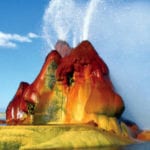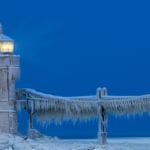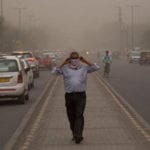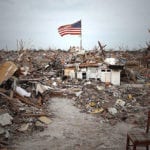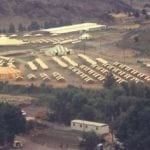 Weird Stuff
Weird Stuff  Weird Stuff
Weird Stuff  Mysteries
Mysteries 10 Tragic Disappearances and Deaths in Joshua Tree National Park
 History
History 10 Ways Childhood Really Sucked in the Old West
 Music
Music 10 Name Origins of Famous Bands from the 1990s
 Religion
Religion 10 Biggest Turnarounds by the Catholic Church
 Weird Stuff
Weird Stuff 10 Unbelievable Times Laws Had Unintended Consequences
 Humans
Humans Ten Historic Women Who Deserve Way More Credit Than They Got
 Movies and TV
Movies and TV 10 Films That Spawned Major Lawsuits
 History
History Ten Times Towns Were Wiped Off the Face of the Earth
 Creepy
Creepy 10 of the Most Disturbingly Haunted Public Houses in the UK
 Weird Stuff
Weird Stuff 10 Niche Subcultures That Are More Popular Than You Might Think
 Mysteries
Mysteries 10 Tragic Disappearances and Deaths in Joshua Tree National Park
 History
History 10 Ways Childhood Really Sucked in the Old West
Who's Behind Listverse?

Jamie Frater
Head Editor
Jamie founded Listverse due to an insatiable desire to share fascinating, obscure, and bizarre facts. He has been a guest speaker on numerous national radio and television stations and is a five time published author.
More About Us Music
Music 10 Name Origins of Famous Bands from the 1990s
 Religion
Religion 10 Biggest Turnarounds by the Catholic Church
 Weird Stuff
Weird Stuff 10 Unbelievable Times Laws Had Unintended Consequences
 Humans
Humans Ten Historic Women Who Deserve Way More Credit Than They Got
 Movies and TV
Movies and TV 10 Films That Spawned Major Lawsuits
 History
History Ten Times Towns Were Wiped Off the Face of the Earth
 Creepy
Creepy 10 of the Most Disturbingly Haunted Public Houses in the UK
10 Shocking Man-Made Disasters
We all know Mother Nature likes to put us in our place. Earthquakes, tornadoes, and other assorted calamities all serve to keep us in check and knock our human ego down a notch. Sometimes, however, we don’t need the help.
Some of the worst disasters in our history can be chalked up to human error. We like to think things are under control, that the people in charge are careful and responsible, but as the following stories show, that’s not always the case.
10 Halifax Ship Explosion
December 6, 1917

A giant game of chicken caused one of the largest non-nuclear explosions in history. This big bang was the result of two ships, the Norwegian vessel SS Imo and the SS Mont Blanc, colliding in the harbor of Halifax, Nova Scotia.[1]
The Mont Blanc, a French cargo ship laden with explosives for use in World War I, was on its way to Bordeaux from New York with a stop in Halifax. As it entered the lane of the Halifax Channel, it met the Imo, which was on its way out. There was a protocol for this type of situation, with each ship assigned to opposite sides of the narrow waterway, but that day, the two captains refused to move out of each other’s way. At the last minute, the Mont Blanc turned but was hit broadside by the Imo.
The resulting explosion caused the harbor to momentarily empty of water, with waves washing tsunami-like onto the surrounding shore. This, in combination with the shock from the explosion, obliterated everything for a 0.8-kilometer (0.5 mi) radius. Structures were flattened, trees snapped, and piles of debris burst into flame. All in all, nearly 2,000 people were killed, and 9,000 were injured. Shock waves were felt 177 kilometers (110 mi) away, and to top it off, rescue and recovery efforts were hampered by a blizzard which blanketed Halifax in 41 centimeters (16 in) of snow. Do-over day, anyone?
9 Deadly Molasses Flood
January 15, 1919
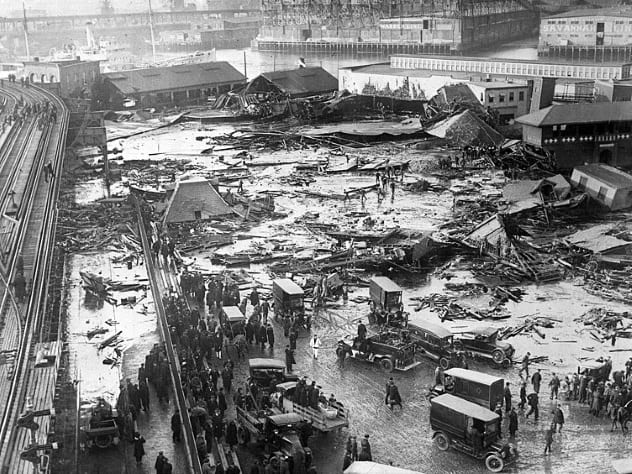
Cause of death . . . molasses? That was what killed 21 inhabitants of Boston’s North End after a thunderous wave of brown goo smashed buildings and smothered terrified bystanders.[2] It was Wednesday, Jan 15, 1919, when one of the weirdest man-made disasters of all time occurred.
It began when a giant holding tank full of molasses began to creak and groan. When citizens reported the problem, authorities seemed unconcerned. The metal tank had made such noises before, and everyone agreed it was just the molasses settling. Besides, how would anyone go about repairing such a thing? The tank was 15 meters (50 ft) tall and built to hold 8.7 million liters (2.3 million gal) of molasses. The decision to ignore the problem was a bad one.
The creaking sounds grew steadily worse until around 12:30 PM, when a deep rumble was followed by the shriek of rending metal. When the tank exploded, its contents flooded the area. In the aftermath, 150 people were injured, and 21 were killed. It was nearly impossible to identify victims under the dried brown glaze, much less remove them from the streets. Boston Harbor was brown for weeks as a result of the flood. This kind of molasses wasn’t so sweet.
8 Johnstown Dam Failure
May 31, 1889
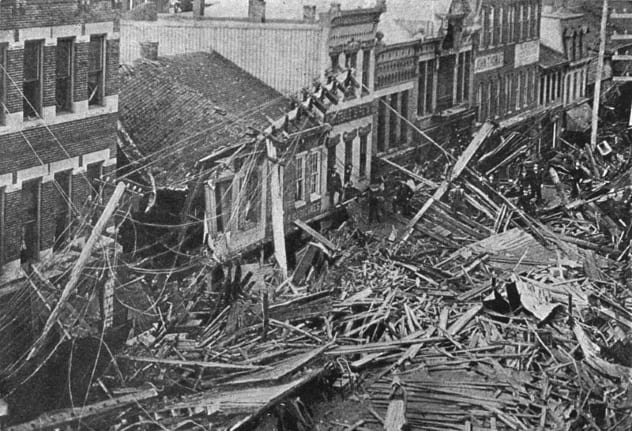
In 1879, a group called the South Fork Fishing and Hunting Club built a luxurious lodge near Johnstown, Pennsylvania, to be used by its wealthy members for vacations, hunting, and fishing trips. While the club members spent lavishly on the lodge, they neglected to update the earthen dam which held beautiful Lake Conemaugh in check. On May 31, 1889, everyone paid the price.
After two days of torrential rain, the lake rose to the top of the dam. Efforts were made to siphon off some of the water, but it was too late. At 3:10 PM, there was a great roar, and the dam burst. Millions of tons of water pounded down the valley at 64 kilometers per hour (40 mph).[3]
By the time the water reached Johnstown, it was loaded with houses, wagons, animals, and trees. A 50-year-old survivor named Lisa Phipps said, “It resembled a rolling mountain, so filthy was its water.”
To add misery to an already epic misfortune, an enormous wall of debris which had stacked up against an old stone bridge caught fire, killing all who sheltered there. When the flood finally dissipated, over 2,200 people had died, and 10 square kilometers (4 mi2) of Johnstown were destroyed.
7 London’s Killer Smog
December 5, 1952
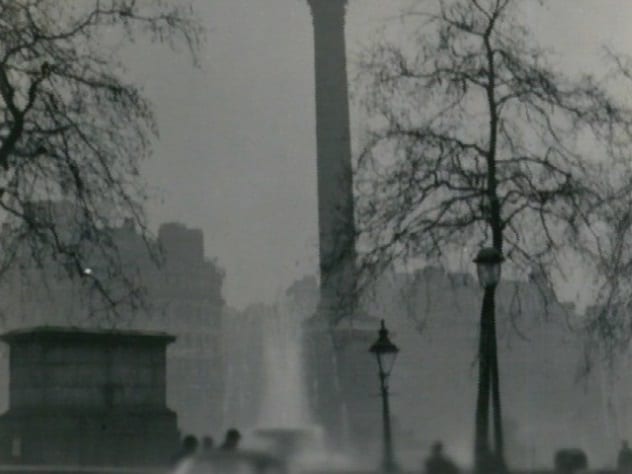
Killer smog sounds like the plot of a horror movie, but this was the real thing. For five days in December 1952, a smothering cloud descended on London, killing thousands.
December 5 was a cold day, and as Londoners woke, they stoked their fireplaces and lit their coal stoves, sending plumes of black smoke into the air. Smoky diesel-fueled buses carried people to work, and factories belched tons of pollution into the air.
Unfortunately, on this day, an inversion set in, trapping pollutants on top of the city. With no wind to clear the air, the smog had nowhere to go. By noon, it had turned a sickly yellowish brown and began to smell like rotten eggs. Parents were warned to keep their children home from school, for fear they might become lost in the vaporous haze. The air was so thick that people couldn’t see their feet, and river traffic was halted on the Thames. Birds died when they flew into buildings, and livestock suffocated. People suffered similar fates.
It is estimated that as many as 12,000 people died of respiratory ailments related directly to the sulfurous air.[4] Finally, after five nightmarish days, a fresh breeze blew in and whisked the killer smog out to sea. It was not until 1956 that a clean air act was finally passed.
6 Exxon Valdez Oil Spill
March 24, 1989
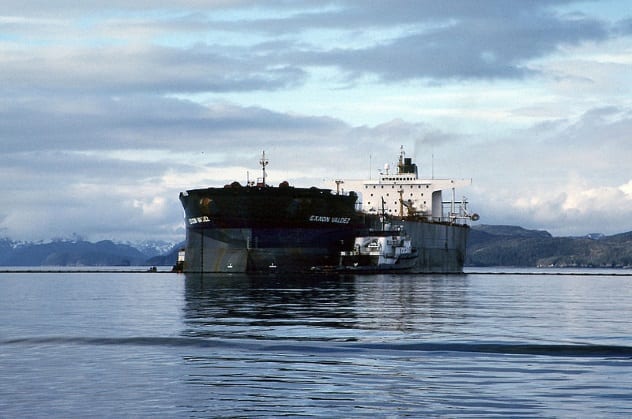
Prince William Sound and the lands around it are home to the grizzly bear, otter, and countless species of birds and aquatic life. This pristine and peaceful area also supported a large fishing community. Life here was forever changed on March 24, 1989, when an oil tanker named the Exxon Valdez ran aground in Prince William Sound.[5]
On impact, the Valdez began spouting sticky crude oil. Roughly 41 million liters (11 million gal) gushed into the water, poisoning sea creatures and destroying the delicate ecosystem. It wasn’t long before black goo also began to wash up on the shore, covering seabirds and harbor seals.
Local fishermen who rushed to help were initially refused, but as the overwhelming effects of the spill became apparent, thousands of volunteers were recruited to help clean up beaches and animals. As the oil-soaked creatures were collected, they were carefully cleaned and rehabilitated, but tragically, thousands of seabirds and otters, hundreds of seals and bald eagles, and 22 orcas did not survive.
Despite being drunk and turning control of the ship over to an unqualified pilot, Joseph Hazelwood, captain of the Valdez, got off relatively easy with community service and a $50,000 fine. Living with the aftermath of the spill wasn’t nearly so easy for those affected. Only time will tell the extent of the damage.
5 Bhopal Chemical Disaster
December 3, 1984
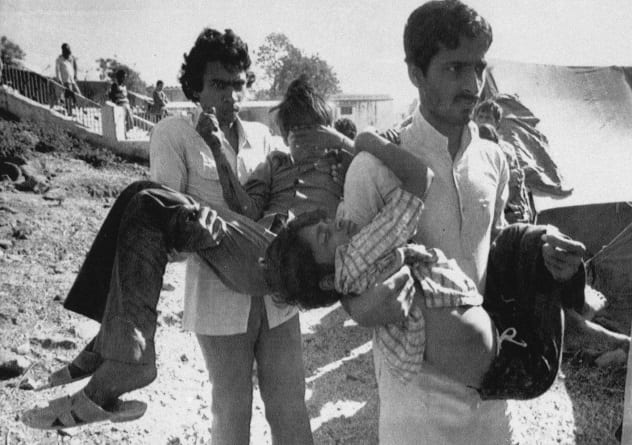
Used in the production of pesticide, methyl isocyanate, or MIC, is also deadly to humans. This became all too clear during the early morning hours of December 3, 1984, when the world’s worst industrial accident occurred at Union Carbide’s chemical plant in Bhopal, India.[6]
Thanks to a leaky storage tank, malfunctioning warning systems, and multiple safety violations, a chemical reaction sent clouds of poisonous gas pouring into the surrounding neighborhoods. The victims, mostly poor and living in a densely populated area near the plant, were largely asleep at the time, but even those who tried to escape found it impossible. The suffocating cloud was heavier than air and hovered close to the ground. Carried by the wind, the gas spread faster than victims could run.
The final death toll was estimated to be between 3,800 and 16,000, with over half a million injured. Survivors suffered long-term consequences, such as lung damage, eye irritation, blindness, and other effects of exposure to the toxic gas. While some of the victims received compensation for their pain and suffering, the amounts were paltry and hardly sufficient to make up for a lifetime of disability.
4 London Beer Tsunami
October 17, 1814

Beer has always been a popular beverage, but most people prefer it in a glass, not flooding the streets of their town. In the early 1800s, many London breweries utilized giant wooden beer vats.[7] They started as tourist attractions but soon turned into an unofficial competition to see who could build the largest cask.
The owners of the Horseshoe Brewery were proud of their vats, which held thousands of barrels of beer. On October 17, 1814, one of their vats burst, causing a domino effect with the surrounding vats. The result was a 4.6-meter-tall (15 ft) wave of beer which crashed through New Street into the St Giles Rookery, one of London’s poorest areas.
Two houses fell like matchsticks in the face of the solid wall of liquid, while shocked citizens were swept away in the torrent. After the wave of beer dispersed and rescuers arrived, they were instructed to be silent to better hear the cries of survivors who were buried in the rubble. In the end, eight people died. In a sad twist, five of the casualties were mourners at the funeral of a young boy who had died the day before.
The accident was determined to be an act of God, and the brewers got off scot-free. The victims were not compensated for their losses in any way.
3 Terrible Train Collision
July 9, 1918

The Dutchman’s Curve train wreck occurred in Nashville, Tennessee, over 100 years ago but is still considered the worst rail collision in US history. On July 9, 1918, two trains traveling at high speeds collided. The resulting impact was heard 3.2 kilometers (2 mi) away.
At around 7:00 AM, train engineer David Kennedy pulled his #4 train out of the station and onto the single track that headed for Memphis. After giving the okay, the tower operator noticed that another train coming from the opposite direction had not yet arrived in the station. Realizing his error, the tower man blew the emergency whistle to stop the #4. It was too late.
Each train was traveling around 100 kilometers per hour (60 mph) in opposite directions on the same track.[8] The trains met in a furious crash. Cars piled on top of each other, littering the surrounding area with debris and bodies. “It was a mess,” said one rescue worker, “just a twisted jumble of steel and humanity.” When all was said and done, 101 people died, and 171 were injured.
In an ironic twist, Kennedy, the engineer of the #4 train, had been planning his retirement. Before departing that morning, he told a coworker that this would be his last run.
2 Arsenal Hill Explosion
April 5, 1876
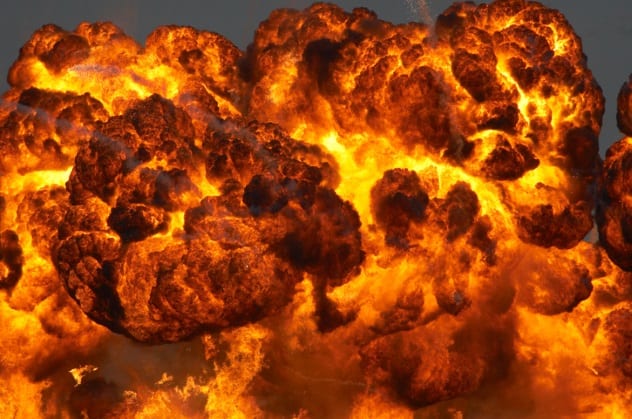
It was a pleasant day in Salt Lake City, and crowds had gathered for the semiannual General Conference of the Mormon Church. People played baseball in the park, rowed in the lake, and picnicked in bright sunshine.
Two young men, Frank Hill and Charles Richardson, both 18, were tending cattle on Arsenal Hill near the powder magazine which held the city’s store of ammunition. In attempt to ward off boredom, Hill and Richardson began taking potshots at a flock of geese flying overhead.
Moments later, 40 tons of gunpowder, blasting powder, and various other types of explosives and ammunition detonated in three consecutive blasts.[9] Both boys were killed instantly. Horses bolted, trees fell, and the baseball players were knocked to the ground. Shards of glass flew through the air, and boulders—some as heavy as 52 kilograms (115 lb)—fell from the sky. Every building within a 3.2-kilometer (2 mi) radius was damaged.
Remarkably, only four people were killed on this terrible day. In the end, it was estimated that 500 tons of rock fell on the city. The area where the powder magazine sat was reduced to a moonscape of craters. The local papers declared this was a day no one would forget, but today, the disaster is relatively obscure.
1 Chernobyl
April 26, 1986
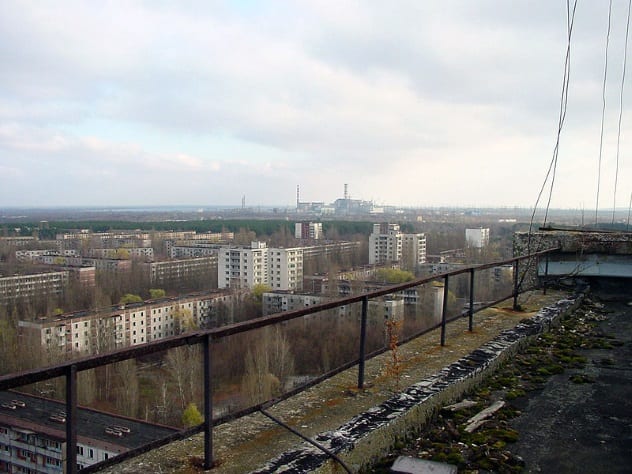
One of the all-time worst man-made disasters was the Chernobyl nuclear accident in 1986.[10] Thanks to plant mismanagement and reactor design flaws, a massive explosion released enormous amounts of radioactivity into the air. Though the Soviet government tried to keep the disaster a secret, surrounding countries quickly noticed elevated levels of radioactive particles and tracked it back to the source.
Several people died immediately after the explosion, and 237 people suffered acute radiation poisoning. Due to lack of detailed information, it is not known how many people ultimately died from cancer and other side effects of this accident, but estimates are in the tens of thousands.
Though the area surrounding Chernobyl is still unsafe and will not be officially habitable for at least another 20,000 years, some people have returned to their homes. And in the ultimate act of defiance of danger, the Chernobyl catastrophe area has now become a tourist attraction.
While I’m a writer by trade and a wanderer by nature, and I like to combine the two activities whenever possible. I’m also lucky enough to be a book lover who works in a library, so I’m constantly inspired by the great writers I come in contact with each day.
For more of the Library Lady, see https://libraryladytravels.com.
Read about more horrendous unnatural disasters on 10 Disasters That Sparked New Safety Regulations and 10 Truly Devastating Disasters Caused By Sleep Deprivation.

